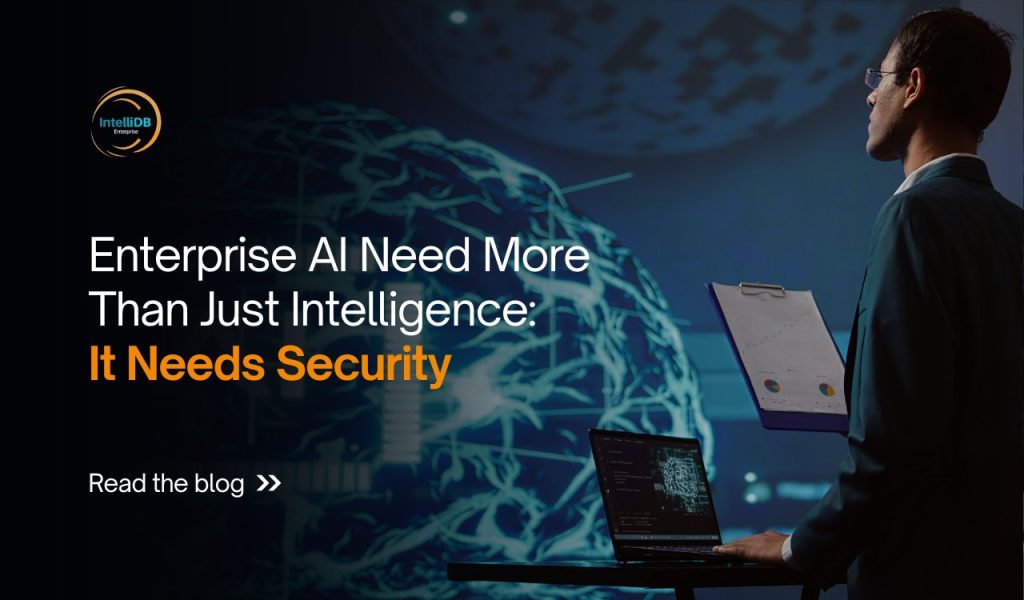AI-Driven Transformation Meets Enterprise-Grade Security
From intelligent customer experiences to predictive and autonomous decision-making, AI is rapidly reshaping industries. As more AI tools get embedded raising security and trust concerns,ability gets less attention for far.
With the increasing identity of digital-first data warehouse industries, AI solutions must support enterprise-grade security standards. Without the convoluted security framework in place, even the snazziest of the AI models can pose critical risks-from data leak, violation of regulations, or even operational sabotage.
This blog discusses the reasons why enterprise-grade security is non-negotiable and forms the cornerstone of any successful AI transformation.
The AI Opportunity Comes with High Stakes
AI tools generate and analyze huge datasets—often including secure-information concerning customers, finances, and operations. They can, if either poorly designed or attacks work wonders against them:
- Exposing algorithms to adversarial interference;
- Leaking confidential or proprietary data;
- Allow unauthorized access through integration vulnerabilities; and
- Flag compliance risks across different regulatory landscapes on a global scale.
With wider acceptance of generative AI and LLMs, now the risk surface is wider. AI outputs may unwittingly contain artifacts from training data, some forms of bias, or perhaps personally identifiable information. This implies that security needs to be ingrained within, not just thrown on top.
What Is Enterprise-Grade Security in the Context of AI?
Enterprise-grade security is beyond firewalls and password protocols. It is a wise, concerted, and policy-driven approach that safeguards every layer of the AI ecosystem.
The key pillars are:
- Data Encryption (In-Transit & At-Rest): To secure data pipelines, training sets, and inference outputs.
- Role-Based Access Control (RBAC): To ensure access to models and sensitive datasets is granted only on a need-to-know basis.
- Model Governance: It involves lineage tracking for data, giving audit trails, and usage logs-to ensure transparency and accountability.
- Threat Detection & Response: Monitoring the AI ecosystem in real-time to detect abnormal activities followed by remediation and forensic analysis.
Why It Matters Now More Than Ever
1. Regulatory Pressure Is Mounting
With binding legislations such as GDPR, HIPAA, and India’s DPDP Act, even enterprises can be held responsible for data breaches, including those that were done by AI tools. Thus, it is multi-million-dollar fines and reputational damages that organizations stand to face in case of non-compliance.
2. AI Is Becoming a Core Infrastructure Layer
Yet another instance of AI driving core operational processes could be fraud detection, customer support, and financial forecasting. A breach in the AI layer is technically a breach in the backbone of the enterprise.
3. LLMs and Generative AI Bring New Attack Vectors
With everything from prompt injection to model inversion, generative AI systems can be abused in novel ways. From an enterprise perspective, protecting against these threats involves content filtering, tracing users, and sandboxing.
Best Practices for Securing Enterprise AI Tools
- Secure MLOps Pipelines: Integrate security checks throughout the model life cycle, from training to the deployment stages.
- Isolate Model Environments: Run inference through containerized or virtualized environments with fine-grained permissioning.
- Encrypt Model Weights & APIs: Keeping AI assets developed even in-house secured and away from unauthorized access.
- Implement AI-Specific IAM Policies: Tailoring identity and access management towards AI workload/endpoint use.
Real-World Application: Securing an AI-Powered Customer Experience Platform
A global telecom company pushing a generative AI chatbot past 20 million users situates enterprise-grade security mechanisms to protect user prompts by:
- Tokenizing prompts prior to model input
- Isolating the inference environment from customer databases
- Logging model responses for conformance auditing
- Applying RBAC to limit admin-level API calls
This led to zero data breaches, quicker compliance approvals, and increased user and regulator confidence.
Conclusion: Innovation Needs a Security Backbone
AI is driving unprecedented innovation—but without enterprise-grade security, it’s a ticking time bomb. For companies using AI tools at scale, security is not an option—it’s an ongoing commitment.
From controlling training data to managing model behavior and protecting APIs, enterprises need to design AI solutions with security as a fundamental design principle.
In the new age of AI transformation, only secure AI is scalable AI.

